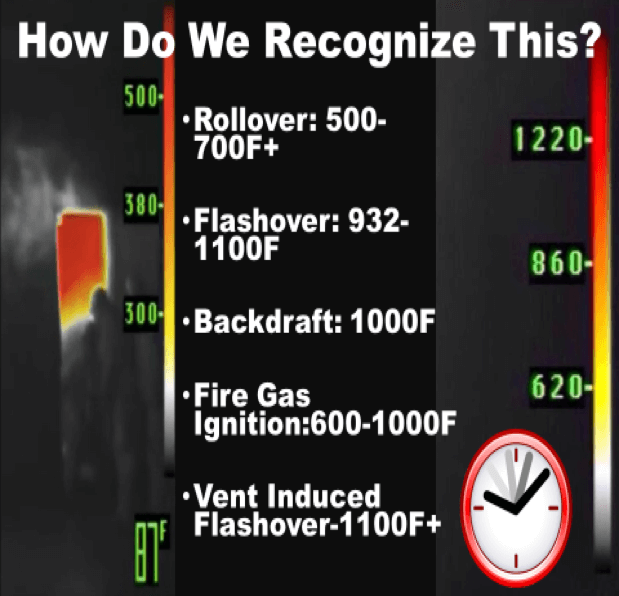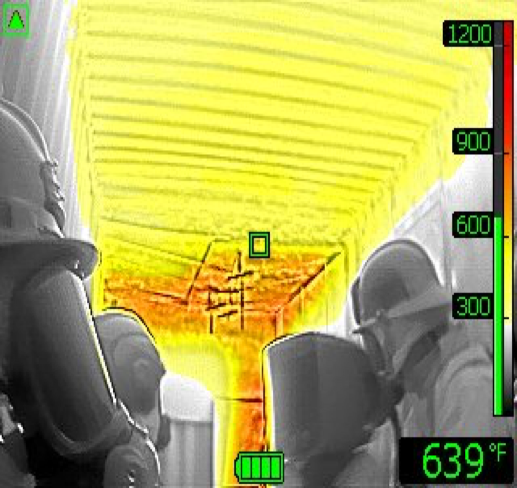How Do Firefighters Measure Heat?
Today’s thermal environment of higher heat release fuels demands a diagnostic tool that allows firefighters to prevent thermal insult, identify and locate the fire’s severity, and locate any victims or firefighters in danger more quickly than ever before. And those who advocate that firefighters should wait to feel the heat to indicate their level of safety should read and remember the following: The equipment we use to protect ourselves or work in these superheated environments are designed to operate at only a Thermal Class III for a maximum of five minutes which equates to 500 degrees or less of moving heat convective currents before our PPE and equipment fails. Researchers have divided the environments that firefighters operate into four thermal classes which are shown in the following infographic.

It is important to note how long we can operate in these temperatures without our PPE & equipment failing. In addition to this data: Most fuels, or contents, begin off-gassing between 300-930 degrees Fahrenheit. Carbon Monoxide ignites at approximately 1100 degrees Fahrenheit. The Polycarbonate of a SCBA Mask begins to fail at 446 degrees Fahrenheit. And Firefighter PPE (Nomex Turn-out gear) begins to fail 572 degrees Fahrenheit.
The Minimum Thermal Protective Performance of turn-out gear (PPE) provides 17.5 seconds of protection before a firefighter receives a second degree burn in flashover temperatures. This is rating is for brand new PPE.
In addition to this, the human body receives a second degree burn at 130 degrees Fahrenheit and at 140 degrees Fahrenheit; the human body’s pain receptors “are turned off” thereby preventing firefighters from feeling any pain or heat at above this temperature.
How then are firefighters recognizing the true thermal severity of these events without a diagnostic tool such as a thermal imaging camera?

Therefore, inherent problem with our training is that we rely on visible cues or “feeling” to recognize rapid fire progression in an environment with limited visibility and very little sensory ability. These fire behavior phenomena shown in the photo above are taught to firefighters in classrooms or in burn buildings where the environment is well ventilated and controlled in order for the student to visibly see these conditions. Yet when firefighters actually face these conditions, they are often in near zero visibility and often fail to recognize the indicators of rapid fire progression until it is too late. Therefore there has never been a greater need for firefighters to be trained in understanding fire behavior, thermal severity, and how to interpret this data through tactical thermal imaging.
Keep learning and stay Intelligently Aggressive,
Instructor Andy Starnes

